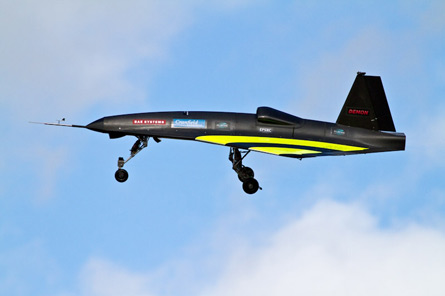Manoeuvring without the aid of control surfaces has been demonstrated by an unmanned air vehicle designed by a British team of industry and academic specialists.
The Demon UAV, an adapted BAE Systems Eclipse, first flew on 17 September with its flight control surfaces deactivated during a portion of the flight to test a new aerodynamic circulation control system.
The Demon relied on a thrust vectoring exhaust nozzle and blown air over the trailing edge of the wing to deliver the aerodynamic forces and moments normally provided by flaps, ailerons and elevators.
| 
|
© BAE Systems |
Video
























